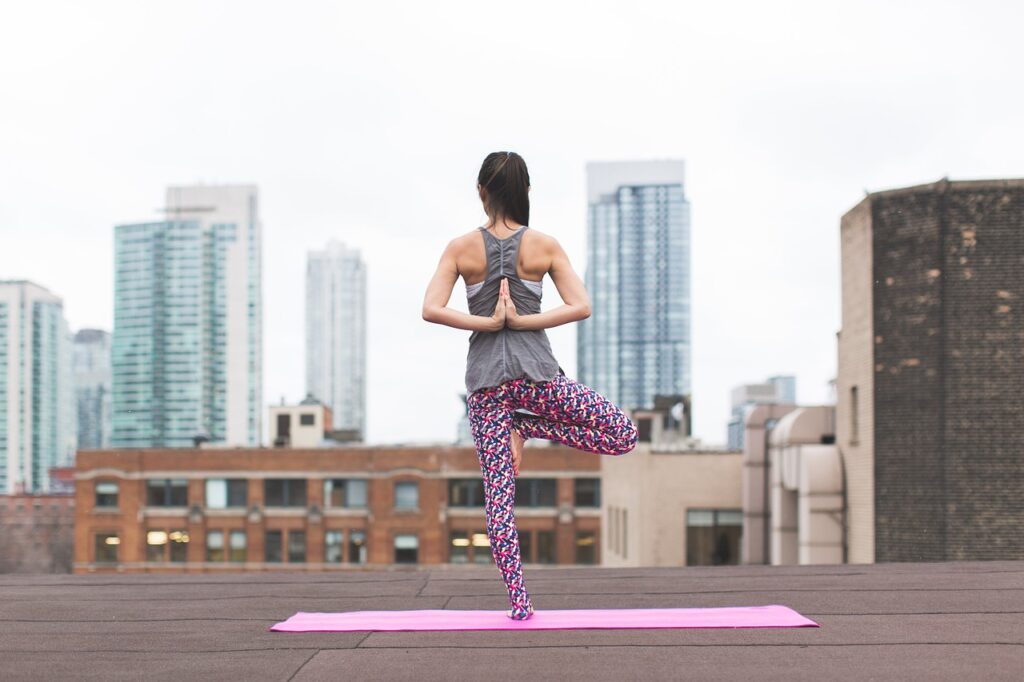
Hip pain can significantly impact our ability to walk comfortably and enjoy everyday activities. Whether it’s a dull ache or sharp discomfort, understanding the causes of hip pain when walking is crucial for effective management and seeking appropriate treatment. Let’s explore some common factors that can contribute to hip pain during walking and how to address them.
Causes of Hip Pain When Walking
Hip pain while walking can stem from various factors, ranging from overuse injuries to underlying medical conditions. Here are some common causes of hip pain when walking:
- Arthritis: Osteoarthritis and rheumatoid arthritis are two types of arthritis that can affect the hip joint. Osteoarthritis occurs due to the gradual wear and tear of the joint cartilage, while rheumatoid arthritis is an autoimmune condition that causes inflammation. Both types can result in hip pain and stiffness during walking.
- Bursitis: Bursae are small fluid-filled sacs that cushion the joints. When these sacs become inflamed, it leads to a condition called bursitis. Hip bursitis can cause pain on the outside of the hip, making walking uncomfortable.
- Tendinitis: Tendinitis refers to the inflammation of tendons, which are the thick cords that connect muscles to bones. In the hip, tendinitis often affects the tendons of the hip flexors or gluteal muscles. Overuse or repetitive motions can contribute to tendinitis and result in hip pain during walking.
- Muscle Strain: Straining or pulling a muscle in the hip can cause pain while walking. This typically occurs due to sudden movements, improper form, or inadequate warm-up before exercise. The hip muscles can become strained, leading to discomfort during walking.
- Hip Labral Tears: The labrum is a ring of cartilage that surrounds the hip socket, providing stability and cushioning. Injury or tearing of the labrum can cause hip pain, especially during weight-bearing activities like walking.
- Structural Abnormalities: Certain structural abnormalities, such as hip dysplasia or femoroacetabular impingement (FAI), can lead to hip pain when walking. Hip dysplasia involves a shallow hip socket, while FAI occurs when there is abnormal bone growth around the hip joint. These abnormalities can cause pain and restricted movement.
- Sciatica: Although sciatica primarily involves the sciatic nerve, it can cause hip pain while walking. The sciatic nerve runs from the lower back, through the hip, and down the leg. When the nerve becomes compressed or irritated, it can result in radiating pain in the hip area.
Other Causes of Hip Pain While Walking
In addition to the common causes mentioned earlier, there are several other factors that can contribute to hip pain when walking. Here are a few additional causes to be aware of:
- Stress Fractures: Repetitive stress or overuse can lead to stress fractures in the hip joint. These are small cracks in the bone that can cause localized hip pain during weight-bearing activities like walking. Rest, proper nutrition, and gradual return to activity are essential for healing stress fractures.
- Hip Tendonitis: Tendonitis in the hip occurs when the tendons in the hip joint become inflamed or irritated. This can result from repetitive movements, overuse, or sudden increases in activity. Hip tendonitis can cause discomfort and pain while walking, especially during the push-off phase.
- Hip Flexor Strain: The hip flexors are a group of muscles that help lift the leg and bend the hip joint. Straining these muscles, often due to sudden movements or excessive stretching, can lead to hip pain during walking. Rest, stretching, and gradual strengthening exercises can aid in recovery.
- Nerve Impingement: Hip pain when walking can sometimes be caused by nerve impingement. Conditions like meralgia paresthetica, in which the lateral femoral cutaneous nerve gets compressed, can result in hip pain, numbness, or tingling sensations during walking.
- Hip Labral Impingement: In some cases, structural abnormalities or changes in the hip joint can lead to labral impingement. This occurs when the labrum gets caught between the bones, causing pain and discomfort while walking. Physical therapy or, in some cases, surgical intervention may be required for relief.
- Hip Dislocation: Although rare, hip dislocation can occur due to trauma or high-energy injuries. It causes severe hip pain and an inability to bear weight on the affected leg. Immediate medical attention is necessary to address a dislocated hip.
Remember, accurately identifying the cause of hip pain while walking is crucial for appropriate treatment and management. If you are experiencing persistent or worsening hip pain during walking, it is recommended to consult a healthcare professional for a thorough evaluation and personalized care plan. They can help determine the underlying cause and guide you towards effective pain relief and rehabilitation strategies.
Treatment for Hip Pain
When it comes to treating hip pain, the approach depends on the underlying cause and severity of the condition. Here are some common treatment options for hip pain:
- Rest and Activity Modification: In cases of overuse injuries or strain, allowing the hip joint to rest and avoiding activities that exacerbate the pain is essential for recovery. Modifying your walking routine or temporarily reducing the intensity or duration of your walks can help alleviate hip pain.
- Physical Therapy: A physical therapist can develop a customized exercise program to address muscle imbalances, improve hip joint stability, and enhance flexibility. They may incorporate stretching, strengthening, and low-impact exercises to target the specific muscles and structures contributing to hip pain.
- Medication: Over-the-counter nonsteroidal anti-inflammatory drugs (NSAIDs), such as ibuprofen or naproxen, can help reduce pain and inflammation in the hip joint. However, it’s important to consult with a healthcare professional before taking any medication to ensure it is appropriate for your specific condition.
- Heat or Cold Therapy: Applying heat or cold packs to the affected hip can help reduce pain and inflammation. Cold therapy is typically preferred in the acute phase of an injury or when there is active inflammation, while heat therapy can help relax muscles and increase blood flow, promoting healing in chronic conditions.
- Assistive Devices: Using assistive devices like crutches, canes, or walkers may be recommended to offload weight from the hip joint and provide support while walking. These devices can help alleviate pain and promote mobility during the healing process.
- Injections: In some cases, corticosteroid injections may be considered to provide short-term pain relief and reduce inflammation in the hip joint. These injections are typically administered under the guidance of a healthcare professional.
- Surgical Intervention: If conservative treatments fail to alleviate hip pain or if there is an underlying structural problem, surgical intervention may be necessary. Procedures such as hip arthroscopy, hip resurfacing, or hip replacement may be recommended by an orthopedic specialist to address specific conditions like severe arthritis or labral tears.
It’s crucial to consult with a healthcare professional to determine the most suitable treatment options for your hip pain. They will evaluate your condition, consider your medical history, and recommend a personalized treatment plan to help you manage pain, restore hip function, and improve your overall quality of life.
Tips for Managing Hip Pain
While it’s important to consult a healthcare professional for a proper diagnosis and treatment plan, there are some general tips that can help manage hip pain. Here are a few strategies you can try:
- Rest and Modify Activities: Give your hip joint time to rest and avoid activities that worsen the pain. Modify your movements and use proper body mechanics to reduce stress on the hip joint. Consider low-impact exercises like swimming or cycling, which are gentler on the hips.
- Apply Heat or Cold Therapy: Applying heat or cold packs to the affected hip can help alleviate pain and reduce inflammation. Experiment with both heat and cold therapy to see which provides better relief for your specific situation. Be sure to follow appropriate guidelines for temperature and duration when using these therapies.
- Gentle Stretching and Strengthening Exercises: Engage in gentle stretching exercises that target the hip muscles to improve flexibility and reduce stiffness. Strengthening exercises, particularly those that focus on the hip abductors, adductors, and glutes, can help stabilize the hip joint and alleviate pain. Consult a physical therapist for guidance on appropriate exercises for your condition.
- Maintain a Healthy Weight: Excess weight can strain the hip joint and exacerbate hip pain. Maintain a healthy weight through a balanced diet and regular exercise to reduce the load on your hips and promote overall joint health.
- Pain Medication: Over-the-counter nonsteroidal anti-inflammatory drugs (NSAIDs) like ibuprofen or naproxen can help alleviate pain and reduce inflammation. However, consult with a healthcare professional before taking any medication to ensure it is safe and appropriate for your specific condition.
- Assistive Devices: Consider using assistive devices like canes or walkers to help offload weight from the hip joint and provide support while walking. These devices can help reduce pain and improve mobility during your recovery.
- Posture and Body Mechanics: Pay attention to your posture and body mechanics throughout the day. Practice good posture while sitting, standing, and walking to maintain proper alignment and reduce stress on the hip joint.
- Avoid Prolonged Sitting: Sitting for extended periods can exacerbate hip pain. Take regular breaks to stand up, stretch, and move around. Consider using a cushion or ergonomic chair to support your hips and promote better posture while sitting.
- Physical Therapy: Working with a physical therapist can be highly beneficial for managing hip pain. They can guide you through specific exercises, manual therapy techniques, and provide education on proper body mechanics to help alleviate pain and improve hip function.
- Stress Reduction: Chronic pain can be influenced by stress levels. Engage in stress-reducing activities such as meditation, deep breathing exercises, or hobbies that help you relax and promote overall well-being.
Remember, these tips are general recommendations, and the most effective management strategies may vary depending on the underlying cause of your hip pain. It’s always best to consult with a healthcare professional for personalized advice and treatment options tailored to your specific needs.
Takeaway
Hip pain while walking requires medical evaluation to determine the underlying cause and appropriate treatment. Seek professional help for accurate diagnosis and personalized care. Treatment options may include rest, therapy, medication, and lifestyle modifications. Proper management can alleviate pain, improve hip function, and enhance overall well-being.




